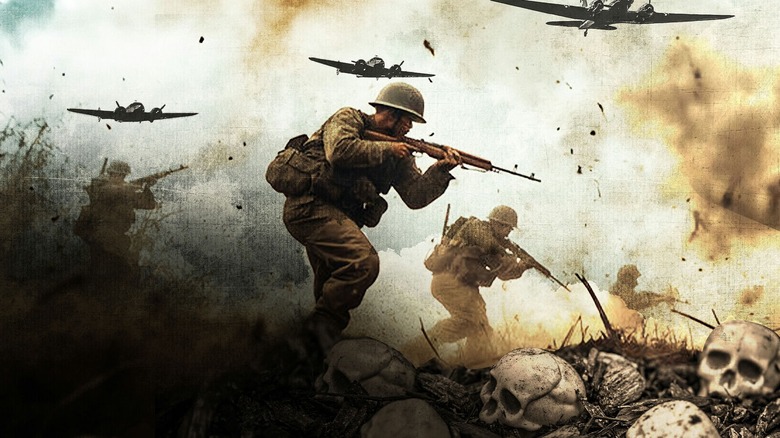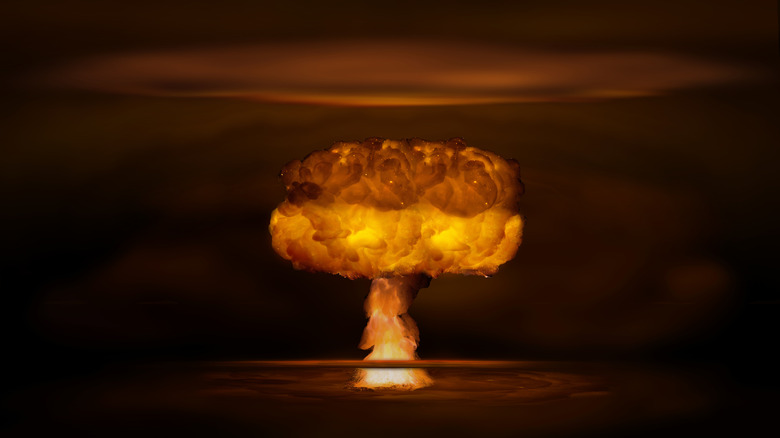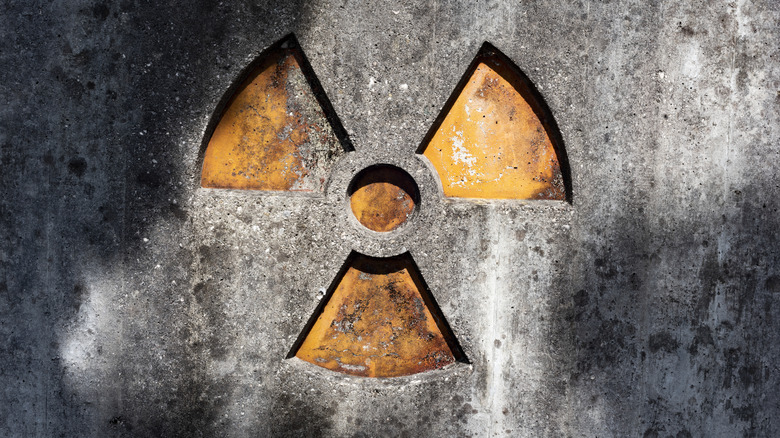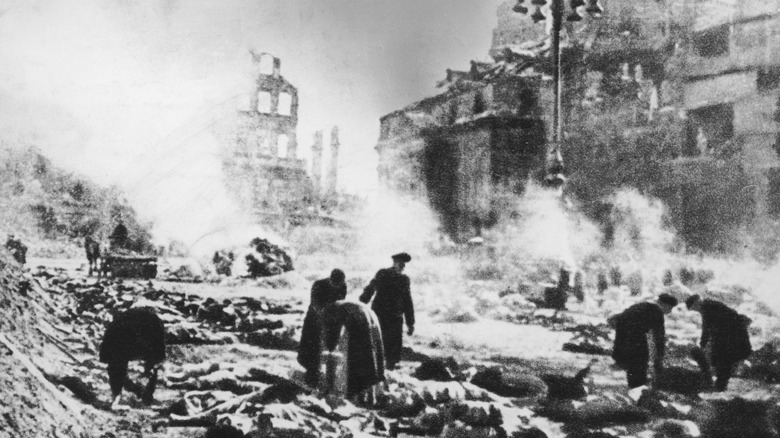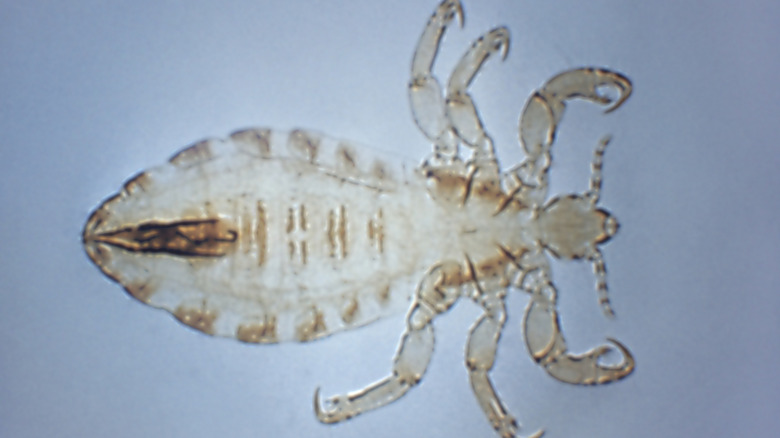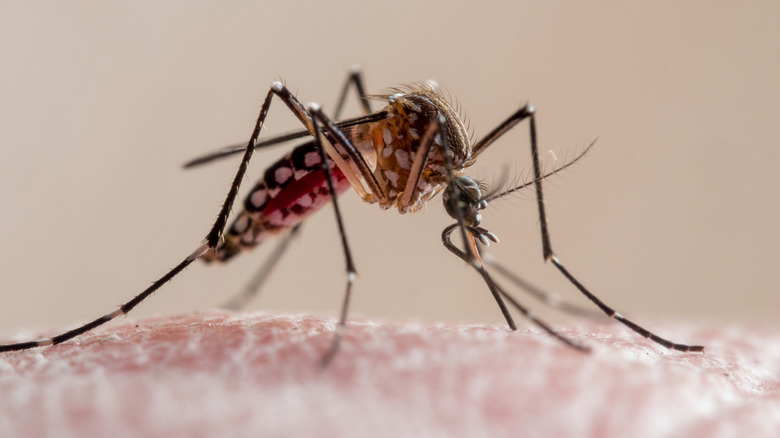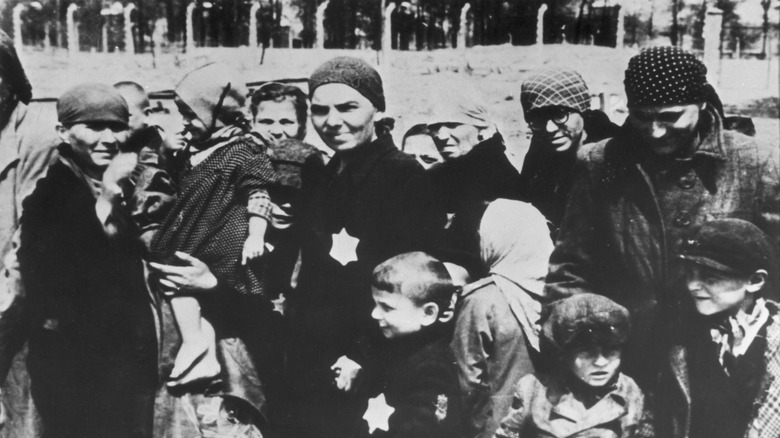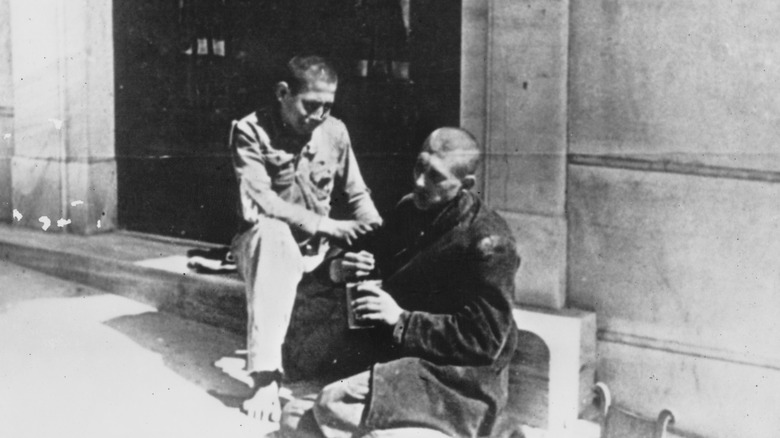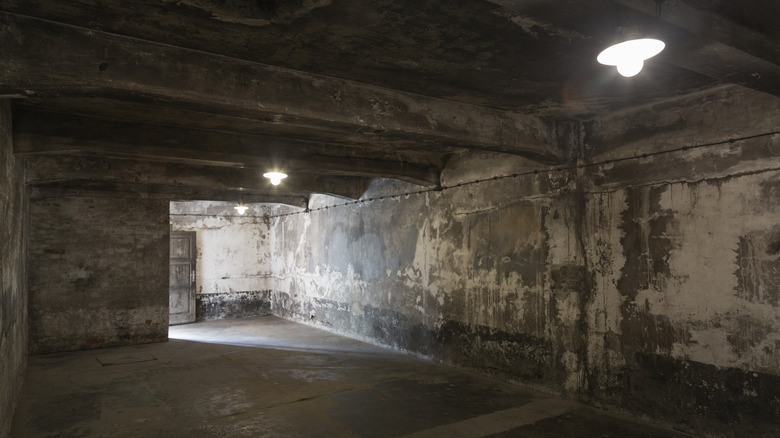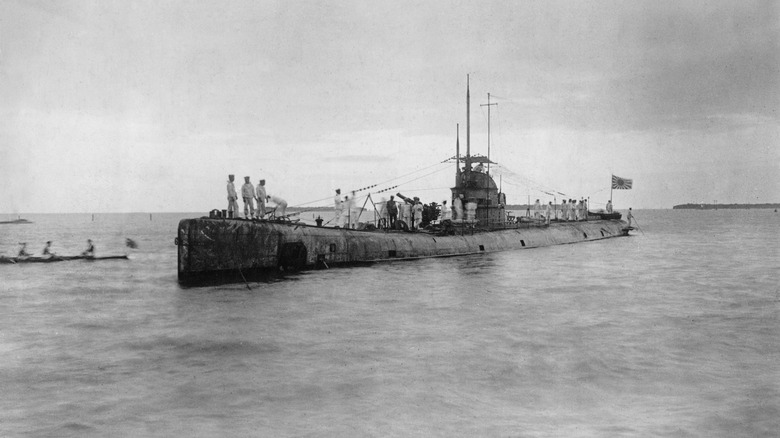The Worst Ways To Die In World War II
World War II, the deadliest conflict in human history, was bloody beyond individual understanding. Official estimates of the cost in human lives vary due to the complexity and destruction of the combat, but they start at an unimaginable 35 million and range up to 60 million, occasionally even higher. (For comparison, in 2025 Canada is estimated to have just shy of 40 million residents.) This unfathomable destruction shattered countries, redrew borders, and eliminated entire families and communities. The world's strongest militaries clashed with then-cutting-edge weapons in pursuit of zeroing out their enemies' capacity to resist. Ideologies preached the eradication of certain groups (most prominently but by no means uniquely the Jews of Europe). Even the "good guys" on the Allied side inflicted enormous civilian casualties on the Axis powers to end their war efforts.
Death may be the great equalizer, but the act of dying is not. Each individual who perished during the conflict met an individual and specific fate, and these varied widely in cruelty and horror. Amid the near-global carnage, there were certainly some fates worse than others.
Atomic weapons
The last major shots of World War II were the biggest. Intending to bring the Pacific conflict to an end and force Japan's surrender without an invasion of its home islands, the United States dropped a uranium bomb on Hiroshima on August 6, 1945. This was followed by the detonation of a plutonium bomb over Nagasaki three days later on August 9. Hiroshima was home to important military institutions defending the island of Kyushu, while unlucky Nagasaki was hit because conditions were poor over primary target Kokura, which housed a munitions factory.
An estimated 40,000 to 50,000 people died immediately or within the first day after the bombing of Hiroshima. The nuke at Nagasaki landed in a valley, so "only" 10,000 initially died there. (Estimates vary for both cities.) Any people within a roughly half-mile radius of the initial blast were vaporized immediately. Not the most painful fate, but among the most horrifying for survivors or witnesses. A particularly chilling anecdote describes a Hiroshima mother discovering only a single one of her daughter's sandals, blackened except for where the girl's foot had rested. Others were burned from the bomb's heat or injured by falling debris, and medical care immediately after the blasts was of course patchy at best.
The Allies got what they wanted: Japan surrendered on August 15. To this day, Hiroshima and Nagasaki are the only two cities, and Japan the only country, to have been attacked with nuclear weapons. But with nine nuclear-armed states so far, there's no guarantee they will remain unique.
Radiation poisoning
Those who survived the initial atomic explosions at Hiroshima and Nagasaki were by no means out of danger. Many of the survivors were exposed to high doses of radiation from the initial blasts, and others were exposed to energy emitted from debris and fallout after the fact. In simple terms, radiation is either waves or small particles that carry energy. One important source of radiation is unstable atoms like those used to make nuclear weapons. Certain forms are dangerous when they hit the body because they can alter atoms or molecules, essentially by running into them. If enough molecules in a cell are altered, the cell itself can be damaged or killed.
Short-term radiation poisoning can present with confusion, low blood pressure, diarrhea (perhaps containing blood), fever, and weakness, among other symptoms, progressing to death if the damage is severe enough. Over longer periods, damage to cells can lead to cancers, especially but not exclusively leukemia. Radiation poisoning boosted the Hiroshima and Nagasaki death tolls in the months after the blasts, though it's difficult to disentangle these victims from those who died of burns and other injuries.
With caveats about the difficulty of determining specific numbers for the affected cities, scientists were able to confirm increases in cancer rates among survivors. According to Columbia University's K=1 Project, leukemia, especially among children, peaked four to six years after the attacks. Clinicians ultimately determined that those exposed to radiation from the bombs had a 46% higher likelihood of developing this cancer than other populations. The second, smaller bump came about 10 years later for solid cancers (i.e., not in the blood). This had a smaller 10.7% risk increase. One bright spot: Children of survivors, provided they were not in the womb during the attack, seemed to be free of inherited effects.
Firebombing
The nuclear attacks on Japan commanded a lot of attention in discussions around the bombing campaigns of World War II, but these were far from the only times death came from the air and ran riot through a city. "Strategic bombing" refers to attacking targets that are not strictly military, with the goal of demoralizing civilian populations and harming overall productivity. The United Kingdom began bombing the Rhineland in 1940, targeting cities en masse.
While cities throughout Germany and Japan were struck with dense bombing that in some instances led to uncontrolled fires, the most symbolic victim of this approach was once-lovely Dresden. The old capital of the Electorate of Saxony, the historical, art-filled, architecturally-rich Dresden reflected much of what people had often liked about Germany before the war. Unfortunately for art lovers, by early 1945, Dresden was also a rail junction critical to what remaining resistance Germany could offer the advancing Soviets.
From February 13 to 15, Allied aircraft led by the United Kingdom dropped thousands of tons of mixed explosives and incendiary bombs on Dresden, flattening much of the city center and starting a firestorm that would not be extinguished for weeks. The lucky victims died of carbon monoxide poisoning. Others succumbed to exposure to heat so intense that steel melted and trees burst into flames as their own resin combusted. 25,000 people died in the bombings and resulting fires, and Dresden almost did too. While it was ultimately rebuilt, initial discussions after the war considered abandoning the site.
Typhus
Typhus refers to a group of related diseases spread by parasites: mites, fleas, lice, and similar itchy hangers-on. Unpleasantly, they are not transmitted by a mere bite but by parasite feces being introduced into the wound. These bacterial infections can then cause rashes, fever, chills, confusion, and nausea, among other symptoms. Untreated, they can progress to meningitis, gangrene, coma, respiratory failure, and death.
While strictly speaking typhus is not transmitted between persons, the lice and other invertebrate carriers that transmit it can be. And during crowded and unsanitary conditions like those of warfare, such spread is common. Typhus was essentially rife in concentration camps in occupied Europe, causing the death of the diarist Anne Frank and her sister after their deportation to the Bergen-Belsen camp. At Buchenwald camp , inmates were deliberately infected with typhus to allow experimenters to compare the lethality of strains and maintain a living supply of the germs.
One relatively bright note from the era comes from, of all places, the Warsaw Ghetto. Typhus struck the city in 1940 after the German occupation, but residents of the tightly controlled Jewish ghetto secretly formed a health commission to combat the epidemic. They took countermeasures, shared information with residents, and performed what research was possible. Their hard work meant that by July 1942, typhus transmission had effectively reached zero within the region. Given the later tragic fate of most Warsaw Ghetto residents amid the subsequent uprising, however, this was sadly only a short reprieve.
Tropical disease
The South Pacific theater of the war and its tropical climate made Allied encounters with new pathogens inevitable. Armies battling the Japanese on the sweltering, forested islands of the campaign encountered opportunistic fungal infections, dengue, dysentery, and the queen of equatorial maladies: malaria. Spread by the bites of infected mosquitos, the disease is caused by parasites with a complex life cycle that primarily operate in (and affect) the liver and the blood. Initial symptoms mirror those of most illnesses: fever and chills, fatigue, aches, and general flu-like malaise. Untreated malaria can progress to confusion, kidney failure, confusion, coma, and death.
It's estimated that in early 1942, 24,000 of the American and Philippine soldiers defending the islands against the initial Japanese invasion had active malaria infections. Even today, with effective anti-malaria drugs in existence, the disease remains a serious health problem. According to the Centers for Disease Control and Prevention (CDC), the world saw an estimated 249 million cases in 2022 with over 600,000 deaths. It remains a leading cause of death in a number of countries, particularly in Africa.
The armed services weren't the only people affected by new diseases. Residents of the Pacific islands involved in the conflict were affected by illnesses brought by the moving armies. A dysentery epidemic in highlands of Papua New Guinea that killed more than 10,000 locals stands as a particularly severe example. With that said, the arrival of military medics and associated public health efforts did mean that some local people were able to benefit from improved medical treatment and modern knowledge of disease control.
Human experimentation
After the war's close, horrified outsiders learned what victims of Germany's and Japan's occupations had known firsthand: Both powers had conducted medical experiments on unwilling human beings. The Holocaust Encyclopedia identifies three types of experiments conducted by Nazi scientists. The first was intended to help them understand how they could aid the survival of active Axis personnel, so subjects were experimented on at high altitudes or in freezing cold. The second type of experiment looked at medications and treatments for communicable diseases, which of course meant inoculating the captive subjects with any illnesses the researchers wished to study or exposing them to poisons to test antidotes. The third and most appalling class of studies were those investigating racial and ideological goals. These included Josef Mengele's infamous tests on twins, where one would be preserved (relatively) healthy and the other experimented upon. Researchers also "explored" how different pathogens affected different populations and investigated mass sterilization methods for use on populations they deemed unfit.
Japan's researchers were no less callous, performing similarly sadistic inquiries in Unit 731. They froze limbs solid to test hypothermia treatments, dissected living people without anesthesia to witness the activity of body systems, and deliberately caused gangrene to observe its progress. Unit 731 workers tested weapons on live subjects: chemical, physical, and radiological. Sexual violence was part of the program, as the researchers both wanted to study both venereal infections and pregnancy. No Japanese researcher was ever tried for these crimes: The commander of the United States's occupation force, General Douglas MacArthur, granted them immunity in exchange for access to what they had learned.
Shark attack
Shark attacks are, overall, a relatively rare phenomenon. The Florida Museum of Natural History's International Shark Attack File reports a worldwide total of 91 bites in 2023, further specifying that the sharks were provoked in 22 cases. (16 were in Florida, perhaps unsurprisingly.) But for the crew of the USS Indianapolis, the stars aligned to briefly make the risk of death by shark a terrifying likely outcome.
On July 30, 1945, the United States heavy cruiser Indianapolis had successfully traveled from San Francisco to a navy base in the Mariana islands and dropped off components for the atomic bomb that would soon ravage Hiroshima. The ship was heading toward the Philippines to prepare for the invasion of Japan, but it missed its rendezvous. The Japanese submarine I-58 launched a torpedo at Indianapolis, hitting a fuel tank. In 12 minutes, it sank. Approximately 900 or so of 1,196 personnel evacuated into the water to await rescue or capture.
Instead, they got sharks. Attracted by the disturbance of the sinking and of the men struggling in the ocean, as well as the blood in the water, sharks approached — probably tiger sharks and the relatively aggressive oceanic whitetip. They first ate the dead and soon moved on to the living men huddled together in groups. (In one incident, hungry soldiers opened a can of Spam but immediately discarded it when it attracted more sharks.) Survivors were finally spotted on August 2, and 316 living men were evacuated from the water by the end of August 3. Most of the dead had died in the initial sinking or from drowning, exposure, or salt poisoning during their time in the sea, but the shark victims, estimated as numbering from a few dozen to over 150, loom large in the U.S. Navy's memory.
Starvation
The disruption and destruction of World War II led to starvation in many of the affected territories. The Soviet Union was the most severely hit, particularly in Ukraine, Belarus, and besieged Leningrad. But food shortages claimed victims across occupied Europe, Asia, and the Pacific, claiming, for example, 5% of the population of Greece and 1.5% of Austrians.
Famine was also an intentional weapon of war. Germany planned to control the food supply in the occupied Soviet Union, calling this, with frankness, "Der Hungerplan." This disruption to the usual flow of food supplies led to the deaths of a probable 7 million Soviet civilians. Later in the war, train operators in the Netherlands went on strike in September 1944 in hopes that the disruption would help the Allied armies advance more quickly to liberate the country. In retaliation, German authorities stopped food from entering the country, leading to a "hunger winter" that killed over 20,000 Dutch citizens before the end of the war. Among its most famous survivors was future glamor icon Audrey Hepburn, who in later interviews recalled eating grass and tulip bulbs to survive.
When deprived of food, the human body begins to consume its stores of carbohydrates and fats, moving on to muscle tissue if necessary. Organs can shrink, and people may feel cold, distracted, and irritable. Eventually, if adequate calories are not consumed, the body can even eat at muscle tissues in the heart. Hallucinations and cardiac arrhythmia can occur in late stages, ultimately followed by death. Survivors of serious malnutrition may suffer lifelong lingering aftereffects: Children in Leningrad during the siege had higher rates of breast cancer and cardiovascular disease as adults, and fetuses in utero during the Dutch hunger winter endured higher rates of schizophrenia and diabetes as adults.
Poison
Poison was among the favored weapons of the Nazi genocide machine. Gas chambers began in 1939 at euthanasia centers in Germany proper, and they were used to murder people experiencing mental illness and those with disabilities considered undesirable by the regime. As the Reich expanded, gas chambers were added to concentration camps and even adapted to mobile use, with sealed trucks used to kill people in occupied or contested territory. This innovation was initially intended to reduce fatigue and distress among German soldiers tired of shooting so many people.
The most common poison used was carbon monoxide, either industrially produced or captured as exhaust from running diesel engines. Carbon monoxide kills by binding to hemoglobin in the blood, preventing cells from carrying pure oxygen to tissues. Later in the war, some concentration camps began using Zyklon B, a pesticide with the active ingredient hydrogen cyanide. Cyanide poisoning also interferes with the body's use of oxygen, but by a different process. Its action, while quick, causes chest pain or tightness, changes to heart and breathing rhythm, and seizures. The horror of suffering this end in a room of other frightened, similarly afflicted people is difficult to imagine.
In an irony of fate, Hitler himself, his mistress Eva Braun, and their Goebbels family allies died by cyanide poisoning in the last days of the European war. The method was also chosen by some of the estimated tens of thousands of Germans who chose suicide over defeat in the closing weeks of the war. In the end, they shared the death of those with whom they would not share Europe.
Sunk in a submarine
World War II was fought on land, in the air, on the water ... and underwater. Both Axis and Allies navies fielded submarines to attack enemy shipping and military vehicles, defend their own assets, and carry out support functions like rescue missions. Submarines were harder to sink than surface boats but could be countered with torpedoes or with depth charges, sinking bombs that sent damaging shock waves crashing into the underwater vehicles. The United States lost 52 submarines during the war, with 3,506 people dead. This 20% casualty rate for the submarine corps was the highest among American forces.
But what happened when a sub sank? It's hard to find contemporary reports, but we can draw some conclusions. First of all, sailors may have been injured from the initial impact: When the USS San Francisco hit an underground mountain in 2005, 98 of the 127 crew members aboard were injured, and one later died. Subsequently, the exact fate of those on board depends on the extent and type of damage. If water is coming in quickly, of course, the crew will soon drown. If leaks are slow or limited, crews can survive a number of days on the oxygen present, with an important variable here being whether electricity is present to help run oxygen-providing equipment.
Crewmen so trapped may succumb to suffocation, cold, or drowning, depending on the exact conditions on board. These are the assumed fates of the 23 initial survivors of the sinking of the Russian vessel Kursk, which sank in 2000. Finally, if the submarine sinks into very deep water (past the rescue limit of 600 meters), exterior water pressure will ultimately crush the vehicle and its contents.
